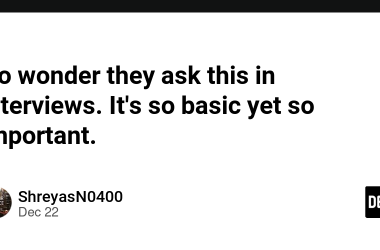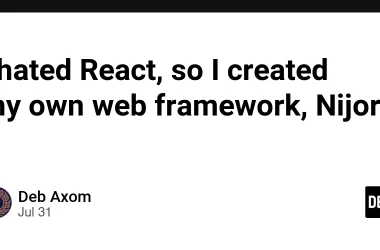Responsive design isn’t a luxury anymore—it’s a necessity. In 2025, with countless devices and screen sizes, building flexible layouts that adapt beautifully is table stakes for any frontend developer.
But which layout technique should you use? CSS Grid, Flexbox, or the new player in town—Container Queries?
In this post, I’ll walk you through the differences, strengths, and ideal use cases of each. We’ll even look at examples where they shine, and when to combine them.
🎯 1. CSS Flexbox: For One-Dimensional Layouts
🔹 What It Is
Flexbox is best for laying out elements in one direction—either a row or a column.
✅ Pros
Super intuitive for nav bars, form elements, and cards
Great control over spacing and alignment
Powerful with gap, justify-content, and align-items
🛑 Limitations
Not ideal for full-page or two-dimensional layouts
💡 Example: Horizontal navigation bar
.nav {
display: flex;
justify-content: space-between;
align-items: center;
}
🧱 2. CSS Grid: For Two-Dimensional Layouts
🔹 What It Is
CSS Grid lets you layout elements in rows and columns simultaneously—perfect for complex, responsive grids.
✅ Pros
Precise control over layout structure
Supports named lines, grid areas, and implicit/explicit rows
Cleaner markup than deeply nested Flexboxes
🛑 Limitations
Slightly more verbose to set up
Can be overkill for simpler UI
💡 Example: Responsive 3-column layout
.grid-container {
display: grid;
grid-template-columns: repeat(auto-fit, minmax(200px, 1fr));
gap: 1rem;
}
🔍 3. Container Queries: The Future of Truly Modular Components
🔹 What It Is
Unlike media queries, Container Queries let you change styles based on the size of the container—not the viewport.
✅ Pros
Makes truly reusable, responsive components
Perfect for design systems
Solves the “component breaks in different layouts” problem
🛑 Limitations
Browser support is solid in 2025, but still maturing
Requires enabling contain and setting container type
💡 Example: Card layout adapting to container size
.card {
container-type: inline-size;
}
@container (min-width: 500px) {
.card {
flex-direction: row;
}
}
🛠️ When to Use What?
Use Case Flexbox Grid Container Queries
Nav bars ✅ Yes 🚫 No 🚫 No
Photo gallery 🚫 No ✅ Yes ✅ Maybe
Form alignment ✅ Yes 🚫 No 🚫 No
Modular UI cards 🚫 No ✅ Yes ✅ Yes
Design systems 🚫 No 🚫 No ✅ Yes
Use Grid for the page layout
Flexbox inside each section/card
Container Queries to make each card responsive on its own
Understanding how to use CSS Grid, Flexbox, and Container Queries together helps you build scalable, modular, and beautiful layouts.
✍️ Over to You
Have you started using container queries in your projects?
What layout challenges do you still face?
Let’s discuss in the comments 👇





